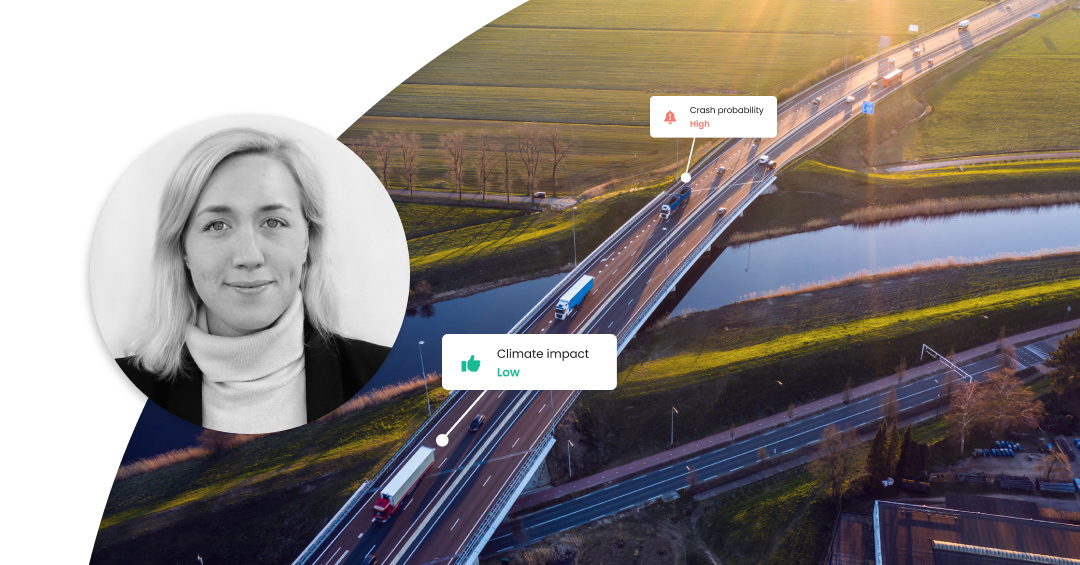How to meet mobility requirements of CSRD

The Corporate Sustainability Reporting Directive (CSRD) has transformed Environmental, Social & Governance (ESG) reporting. Not only is it the largest and most comprehensive regulation to date, but it applies to more companies than ever before. As such, the CSRD is set to become the global benchmark for ESG reporting, even for companies that do not yet fall under its scope.
At Greater Than, we’re proud to enable you to meet the mobility requirements of CSRD. That is, converting your existing data into the data needed to report on your organization’s impact on the planet from a mobility perspective. And, together with our partners in the consultancy space, we’re able to ensure that your company meets ALL the requirements of CSRD. Here’s all you need to know.
What is CSRD?
The EU’s CSRD legislation requires large companies and listed SMEs to publish reports on their ESG activities. Some non-EU companies must report if they generate over EUR 150 million on the EU market. The CSRD brings sustainability reporting in line with financial reporting to drive accountability and transparency while promoting sustainable practices and investments.
CSRD is already in force, applicable to the 2024 financial year. This means that the first CSRD reports will be published in 2025, starting with large enterprise companies.
The CSRD and applicable reporting standards
Under CSRD, companies must report according to European Sustainability Reporting Standards (ESRS). The standards fall under the three areas of Environmental, Social and Governance.

In summary, in relation to mobility:
ESRS E1 includes measuring CO2 emissions across Scopes 1, 2 and 3. It also requires organizations to set reduction targets in line with limiting global warming to 1.5°C, as per the Paris Agreement.
ESRS S1 includes the consideration of how the company’s operations affect its workforce, including the management of safety risks. From a mobility perspective, this includes the management of risk while driving on company business.
ESRS S2 refers to workers in the value chain, which includes the same considerations as above, but for workers outside of the company’s direct operations – for example, workers involved in the supply and distribution of the company’s goods.
ESRS S4 relates to how companies affect consumers and end-users of their products and/or services, in terms of material positive and negative actual or potential impacts.
What type of mobility data do organizations need to fulfil CSRD requirements?
To comply with CSRD, organizations are required to gather large volumes of data, including mobility data. The focus needs to be on how the organization impacts society and the environment, and what they are doing to reduce this.
CO2 emissions data must be reported in line with the GHG Protocol, the world’s most widely used greenhouse gas accounting standard. The GHG Protocol sets out how emissions data should be calculated across scopes 1, 2, and 3, with guidance on everything from emission factors to traceability.
In terms of safety, or “social” data, organizations need to measure the risks presented by their operations, and how they are managing this.
The CSRD requires both quantitative AND qualitative data; data that measures impact now and in the future, and that covers the whole value chain.
Taking action on mobility data
At Greater Than, we’re proud to offer a solution that makes organizations’ mobility data CSRD compliant. Not only do we ensure the data measures driver impact, but we make it actionable, traceable and auditable.
Our solution uses AI to convert companies’ existing driving data into crash probability and climate impact. And, because we uniquely measure the driver influence on safety and the environment regardless of geographical factors or vehicle driven, we make it easy to compare performance and set targets for improvement.
We provide:
- Monthly reporting – to measure
- Guidance on drivers with most improvement potential with regards safety and sustainability – to act
- Annual summary – to report
And, even better, we partner with consultancy companies to ensure you have ALL the data you need to fulfil CSRD legislation.
There’s no need to wait to comply with CSRD
Although the CSRD is a phased regulation, meaning it currently only applies to companies of a certain size, its nature means it is relevant to companies of all sizes. The main aim of the CSRD is to encourage accountability and transparency, while promoting sustainable activities. This approach can be adopted by companies of ANY size. Not just that, but many smaller companies make up part of larger firms’ value chains, meaning they are directly impacted by CSRD requirements.
The volume of data required to fulfil the mobility aspect of CSRD might seem daunting, but getting started is easy. All we require is 1km of GPS driving data (accessible via connected vehicle, app, dashcam etc) to start uncovering real-time crash probability and climate impact insights. We can even calculate CSRD compliant data for organizations who own only basic data, such as vehicle make and model, and mileage driven.
Don’t just become CSRD compliant – launch your own ESG solution!
As well as helping any organization to become CSRD compliant, we also offer a white label ESG compliance package that enables companies to launch their own CSRD solution. This includes insurance companies, mobility firms and telematics/fleet management solution providers.
Our white label solution converts fleet data into actionable intelligence, in a format that best suits our customers. And, thanks to the uniqueness of our scoring, our AI harmonizes data regardless of source, whether it’s from a mix of telematics solutions, connected vehicles or other sources.
Check out our ESG compliance package to discover more, or contact us to discuss your CSRD mobility data requirements.

